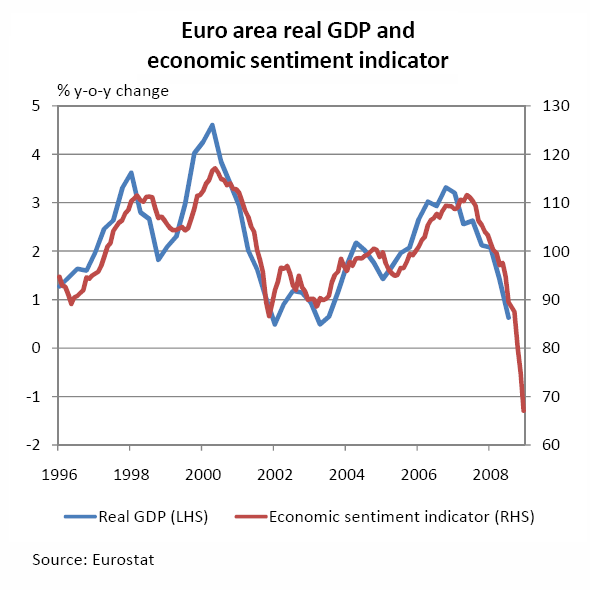


12 January 2009
The new year is less than two weeks old but it is already clear that the global economy continued to contract near the end of the preceding year.
The United States economy entered a recession in December 2007 and, if the employment situation is any indication, it does not look like it is recovering yet.
On 9 January, the Labor Department reported that non-farm payroll employment fell by 524,000 in December based on the establishment survey. This means that the total number of jobs lost in 2008 is now estimated at 2.59 million, just a little less than the 2.75 million at the end of World War 2, with 1.9 million jobs lost in just the past four months.
The report also showed that the unemployment rate rose from 6.8 percent in November to 7.2 percent in December, the highest level in almost 16 years, based on data from the household survey. This survey showed employment falling 806,000 last month.

Other indicators corroborate the continuing weakness in the US economy.
On 2 January, the Institute for Supply Management reported that its PMI, a gauge of manufacturing activity in the US, fell from 36.2 in November to 32.4 in December, the lowest level since 1980. Services held up better, as another ISM report on 6 January showed that the non-manufacturing index rose from 37.3 in November to 40.6 in December, a number, though, that still indicates a decline in activity.
The latest data from the Economic Cycle Research Institute also showed that an economic recovery is not imminent. Although the ECRI's weekly leading index rose to 109.4 in the week ending 2 January from 108 in the previous week and its annualised growth rate rose to minus 26.8 from minus 28.7 percent, the latter remained deep in negative territory.
The economy in the euro area is also weak. On 8 January, Eurostat confirmed that gross domestic product in the euro area fell by 0.2 percent in the third quarter, thus also confirming that the economy is in recession after previously reporting that it had also shrunk by 0.2 percent in the second quarter.
As a result, unemployment in the euro area has begun to rise. The unemployment rate rose to 7.8 percent in November from 7.7 percent in October, according to another report from Eurostat.
The European Commission's business and consumer survey showed that the weakness persisted into the end of 2008. The economic sentiment indicator from the survey for the euro area fell sharply to 67.1 in December from 74.9 in November.

Surveys by Markit Economics showed a similar picture. The eurozone purchasing managers' index for manufacturing fell from 35.6 in November to 33.9 in December, the lowest since the survey was introduced in 1998. The services index declined from 42.5 to 42.1.
It was the same story in Japan.
The Nomura/JMMA Japan purchasing managers index of manufacturing activity fell from 36.7 in November to 30.8 in December, the lowest since the survey began in 2001.
Other data corroborated the negative trend in Japanese manufacturing in the fourth quarter of 2008. Industrial production fell 8.1 percent in November after having fallen 3.1 percent in October.
With Japan's industrial output falling, so almost certainly did its GDP. Data released by the Cabinet Office on 9 January showed that the composite coincidence index fell from 97.7 in October to 94.9 in November. The composite leading index fell from 85.2 to 81.5.

So the US, eurozone and Japanese economies all look as though they contracted in the fourth quarter of 2008 and showed no sign of imminent recovery. It is certainly looking like the global economy will start 2009 on a negative note.
Disclaimer: The commentaries posted here represent the opinions of the author at the time of posting and should not be taken as investment advice. Readers who wish to take any investment action based on information obtained from this site should seek appropriate advice from a qualified financial adviser.